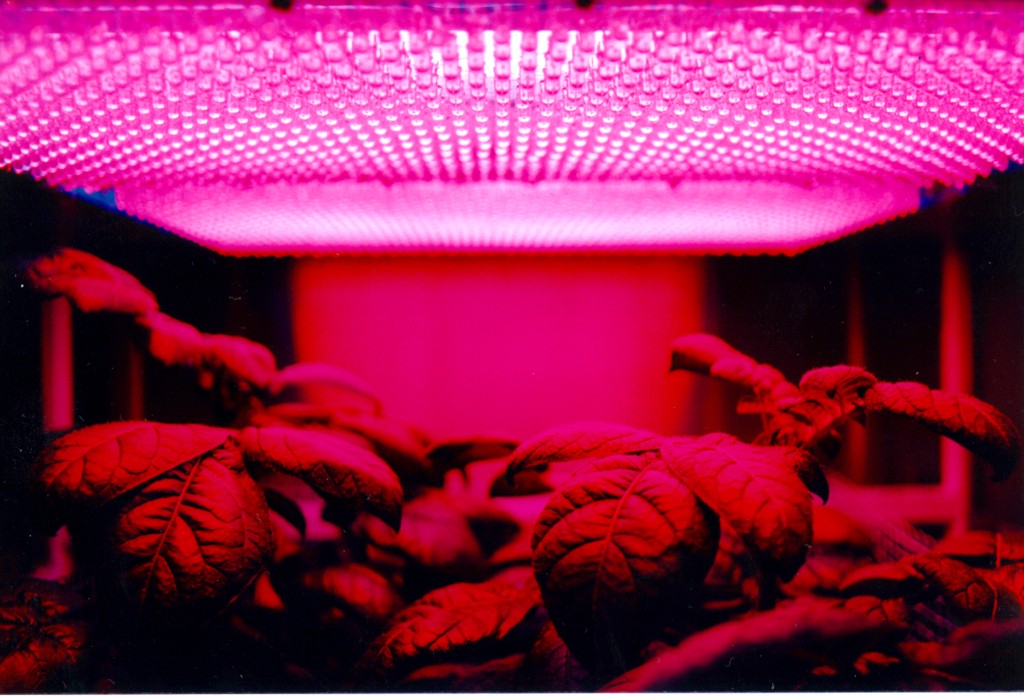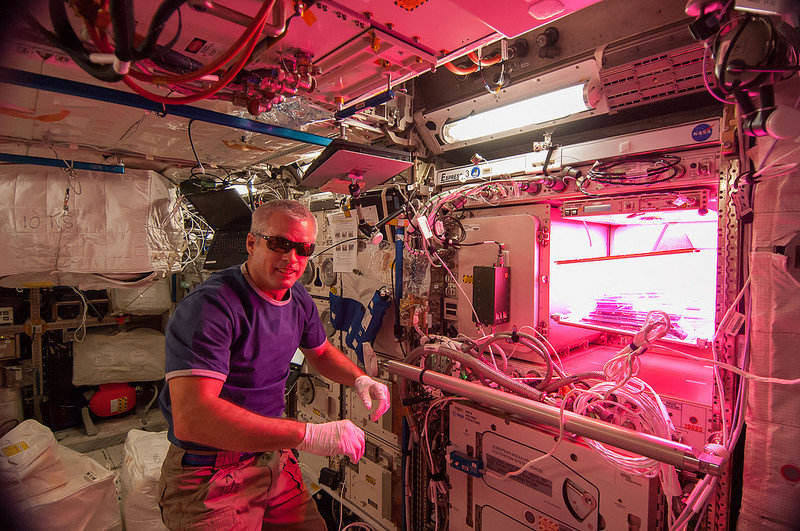
Indoor farming isn’t a new concept, but bringing LEDs into it is making the process more cost-effective.
Traditional farmers are hostages to the weather. Drought, flood, or an early frost can destroy entire harvests and cost the agricultural sector millions of dollars in lost revenue. Bringing crops indoors can remove some of the risks of working in an unpredictable environment: since an indoor farm doesn’t need the sun at all, it can be set up anywhere. Unlike familiar sprawling greenhouses, modern indoor farming makes use of the vertical axis. Stacking plants on tall racks of well-lit shelves provides layer after layer of productive growing space.
The compact nature of LED lighting allows producers to pack many more bulbs into a smaller space, leaving more room for valuable plants. Energy-efficient LEDs emit much less heat than traditional incandescent lights, and can safely be placed much closer to the plants. That makes it possible for growing racks to be squeezed closer together, boosting productivity per square foot. Eliminating extra heat also means buildings housing indoor farms don’t need to be as heavily cooled, lowering energy use and operating costs.
Growing crops in indoor vertical spaces makes it possible to move farms closer to the populations they feed. It’s easier to eat local and keep your carbon footprint smaller if you’re able to get fresh veggies to your table without needing them brought in by a fleet of gasoline-powered trucks. If the local farm is in a 20-story building down the block, instead of a 20-mile drive out-of-town, it’s that much more accessible.

Using LED Science to Maximize Yield
It’s easy to control light color with LED bulbs, so a producer can target the ideal wavelength for a specific crop. Years of research have gone into pinpointing the best type of light for indoor crop production, because agriculture is big business and if we’re going to continue feeding the growing global population, we’ll need to be working as efficiently as possible. It turns out that the sugar-producing chlorophyll in plants absorbs pink light best (the absorption peak is ~660 nanometers), but adding a small amount of blue light to it gets the best results. Why use a broad-spectrum light on your plants and waste all those other wavelengths, when you can install rows of purple LEDs and give the plants exactly what they need?
Space exploration stands to benefit from LED-lit farming, because if we’re ever going to get astronauts to Mars or beyond, they’re going to need to grow some of their own food. Seeds weigh less than plants and are cheaper to send up into orbit, so NASA has been running experiments to see whether edible plants can be efficiently grown in space. NASA’s Vegetable Production System (Veggie) experiment had astronauts growing red romaine lettuce under magenta LEDs on the International Space Station. The experiment was a success, and crew members of ISS Expedition 44 enjoyed their first zero-gravity salad in August. The team reported that it tasted “fresh,” and with that success NASA plans to expand their experiments to other vegetables in the near future.
Photo credits: via Wikimedia under Creative Commons License